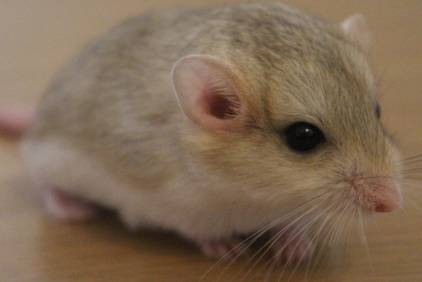Overview of Fat-tailed Gerbils
Duprasi are also known as the fat-tailed gerbil and colloquially sometimes as Doops. They are a member of the gerbil family Gerbillinae and are the only member of the genus Pachyuromys. Some people consider them a missing link between gerbils and hamsters. Fat-tailed gerbils can make excellent pets, as they can tame down well and have simple dietary needs.
Duprasi are relatively new to the pet trade and some initial confusion over Algerian and Egyptian imports mean that some hybrids exist. The fat-tailed gerbil's wild habitat is in Northern Sahara (North-western Egypt, Libya, Tunisia, and Algeria) is composed of sparsely vegetated sands sheets and rocky deserts. They are naturally insectivorous and would live in sandy burrows in the wild.
Pet Fat-tailed gerbils live around 2-4 years in captivity and measure around 10cm with 5cm tail. The well-rounded tail is used to store water and fat, much like a camel uses its hump and so is often a good indicator of an animal's health. Male fat-tailed gerbils generally have a thicker tail than females. Although it is possible to keep Fat-tailed gerbils together, fallouts can happen rapidly and without warning so they are often best kept alone, especially for inexperienced rodent keepers. A pet fat-tailed gerbil will be fine kept alone, providing you are giving them enough space, enrichment and time. They must have a large, solid-based wheel for exercise.
Coat colour is sandy/yellow although the confusion over hybrids has led to other shades such as light greys. This can also lead to a wide variance in weights with a mature adult potentially weighing in at anything from 30 to 90g.
Duprasi can be very friendly, and like Mongolian Gerbils will have periods of sleep and activity throughout the day, often with dusk and dawn being the most active. I've found they are most active from 10pm. Fat-tailed gerbils make an easy pet to handle since they are both slow-moving and quite docile. Fat-tailed gerbils can be rather defensive about their nests, so it is important not to wake them too abruptly.
Duprasi behaviour is more akin to a hamster than gerbil, but they do have some unique traits such as their endearing habit of sleeping on their back, with feet pointing upwards as they can be quite deep sleepers. Fat-tailed gerbils are very clean animals and have no noticeable odour. They love the use of a sand bath to help keep their coats from getting greasy, this should be regularly changed.
The Duprasi diet is not that dissimilar to a normal gerbil. Care should be taken to ensure they do not receive too much moisture in their diet since this can lead to diarrhoea.
Duprasi can be kept in a vivarium or tank providing adequate ventilation is given. Fat-tailed gerbils are not good climbers so it is important to give them plenty of floorspace. Fat-tailed gerbils can't jump very high and need items to hide and nest in. A good quality substrate should be provided for your pet fat-tailed gerbil, of at least 2 inches deep since they enjoy digging though do not make burrows in the same way as Mongolian Gerbil. Plain bedding can be used as well as a good layer of hay. See more details on Duprasi environment.

